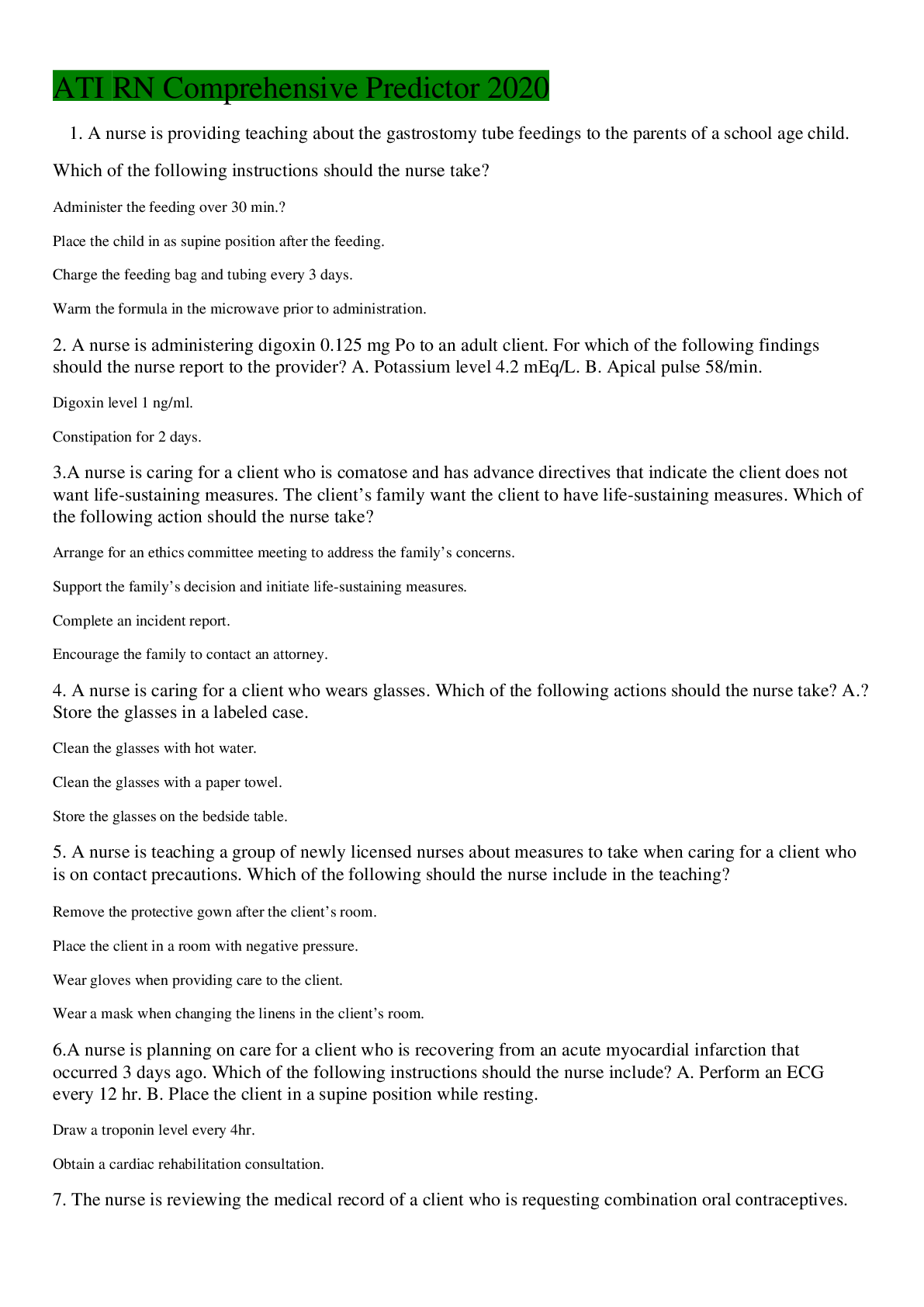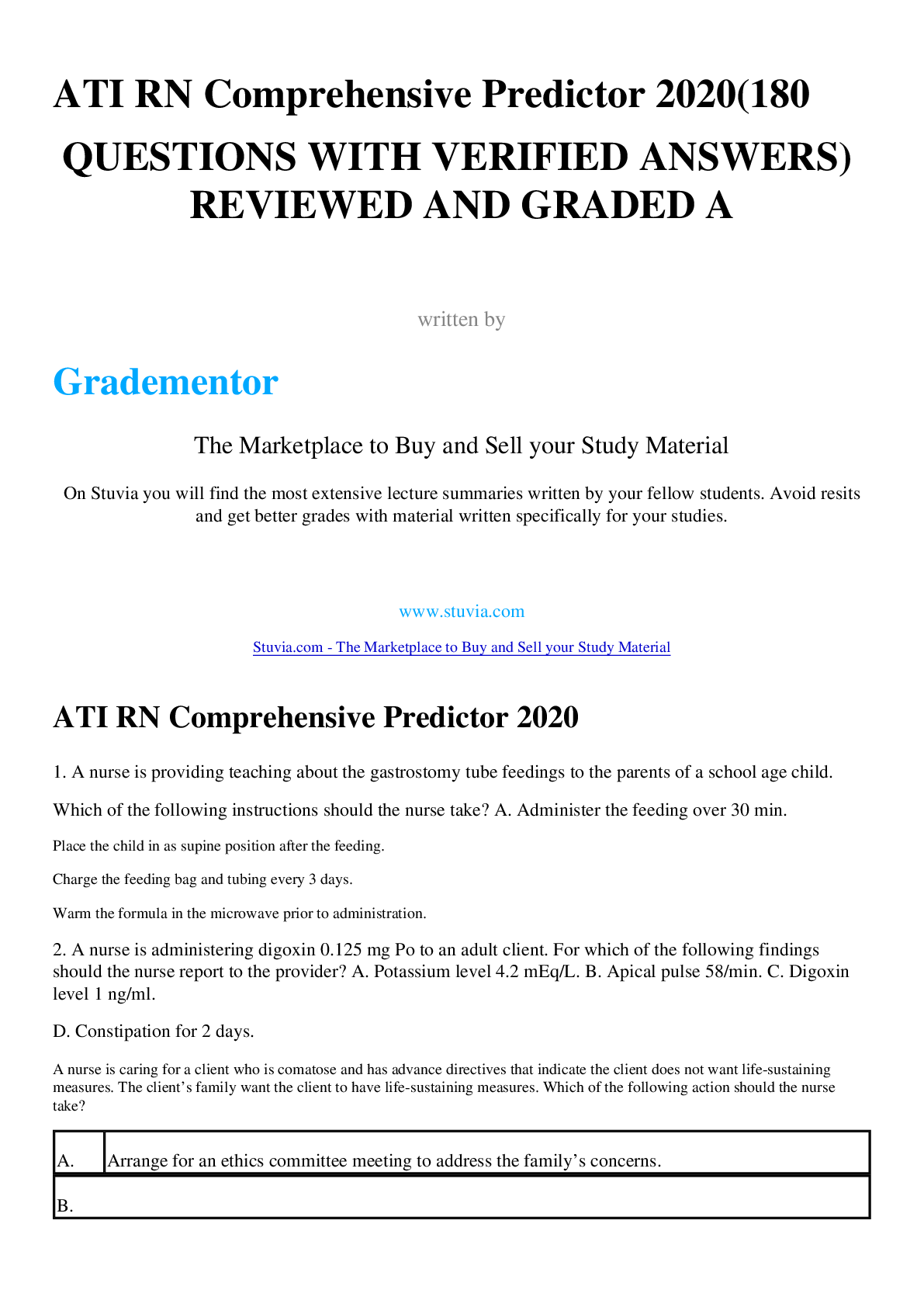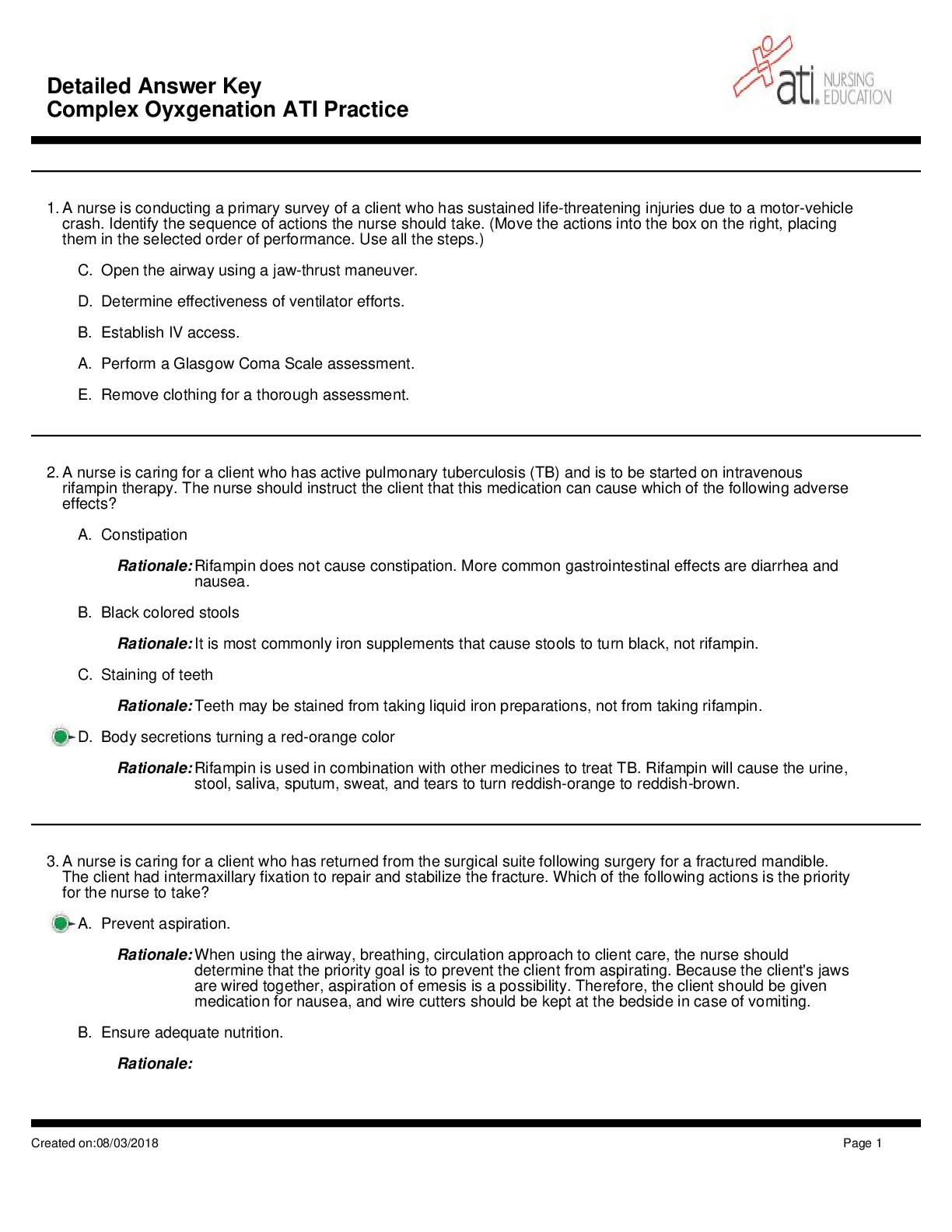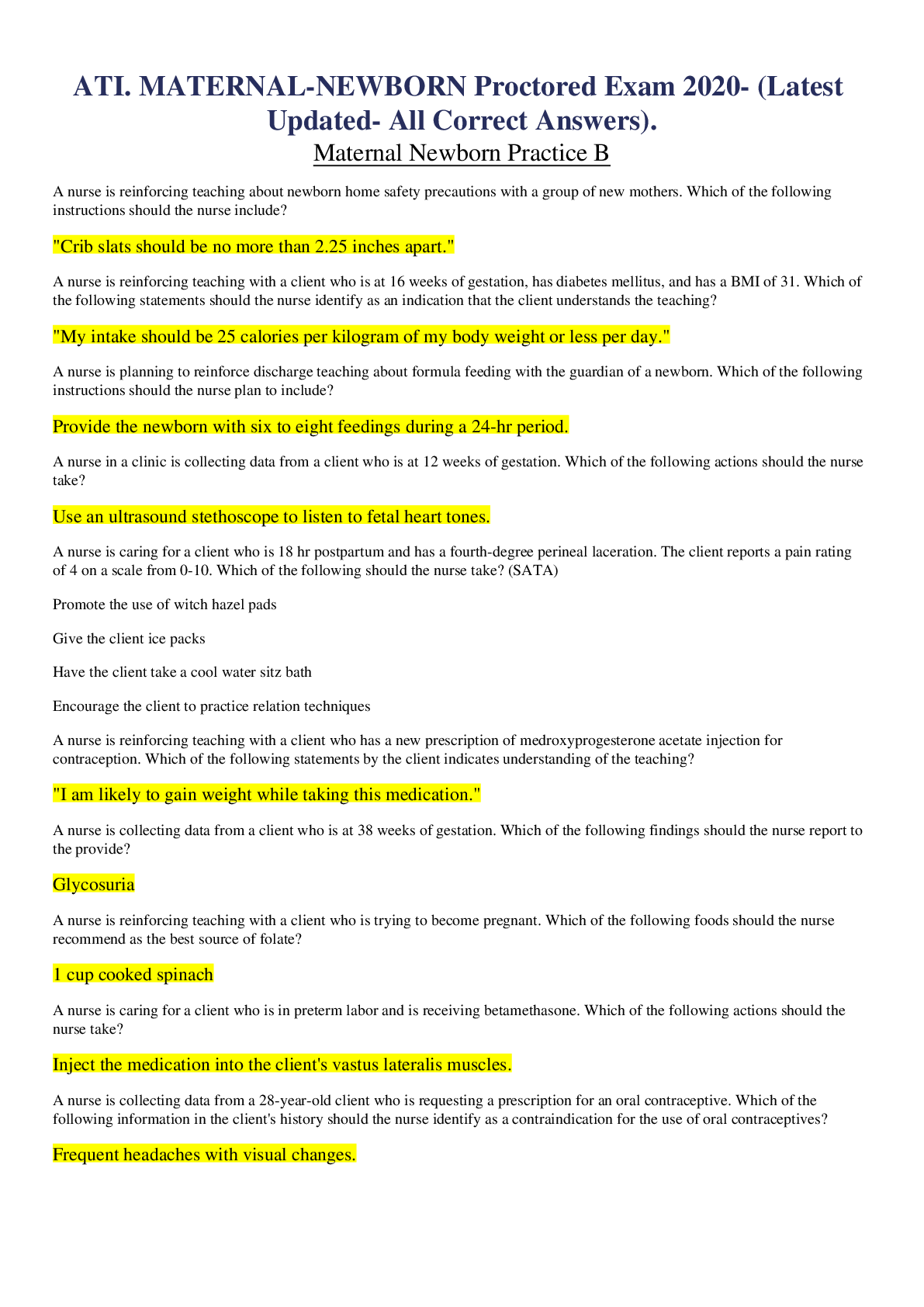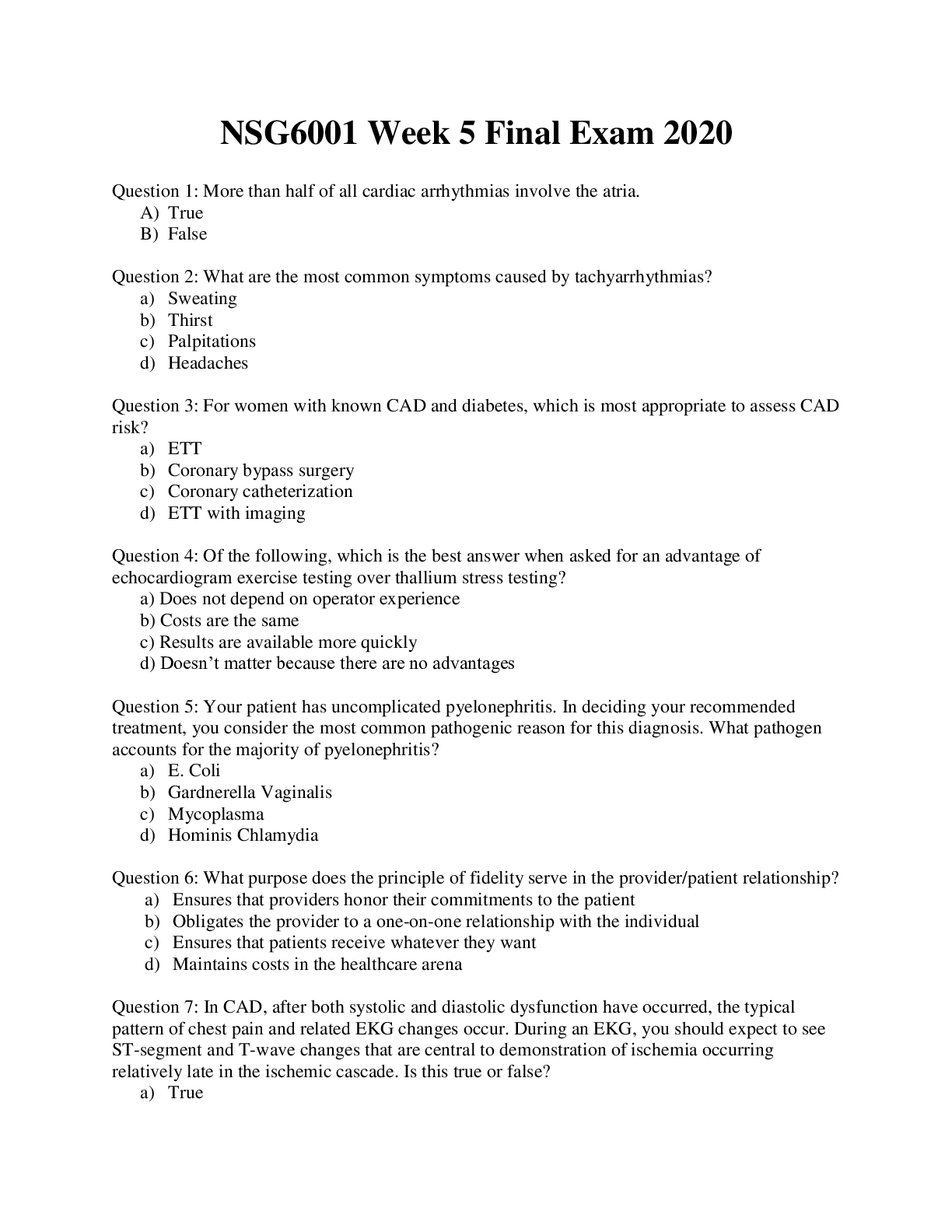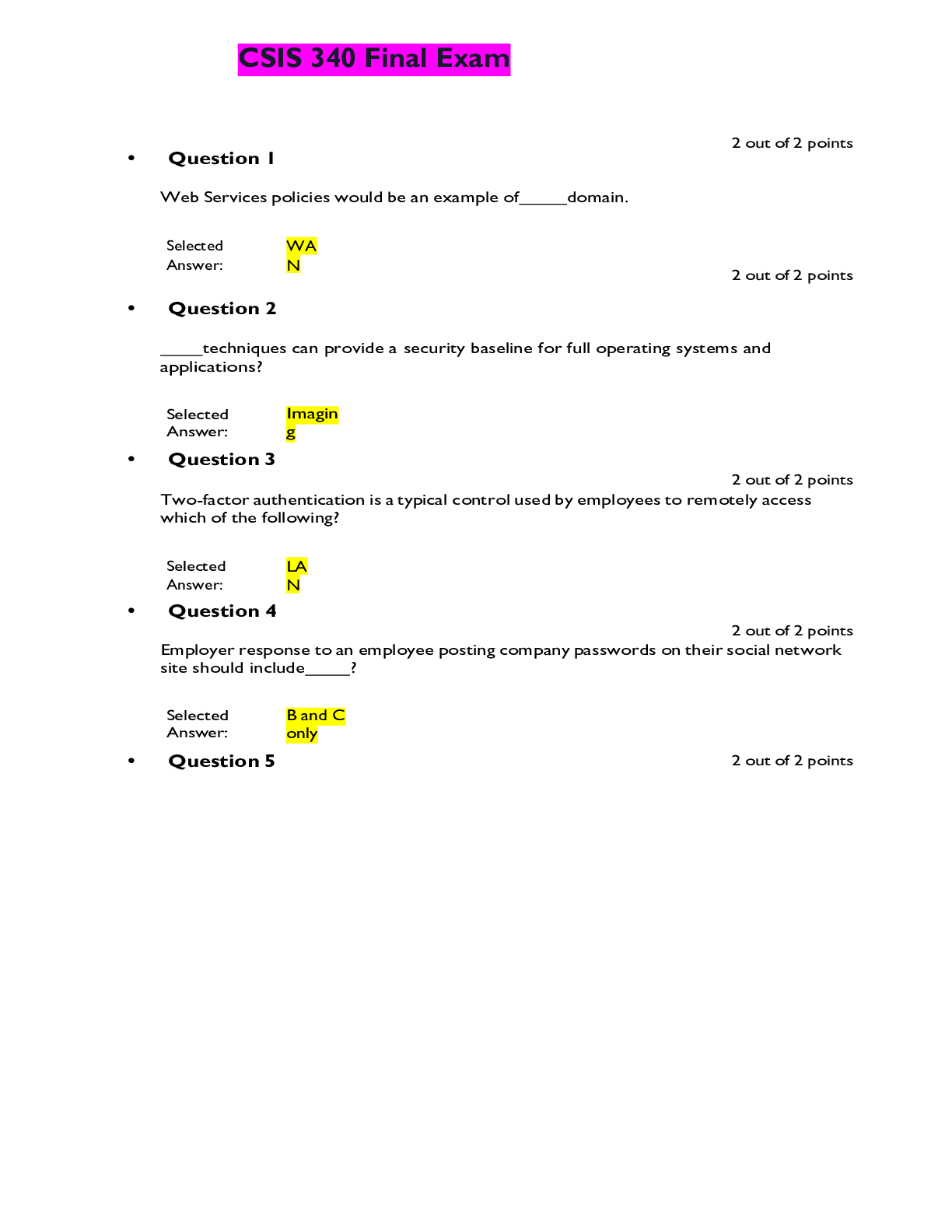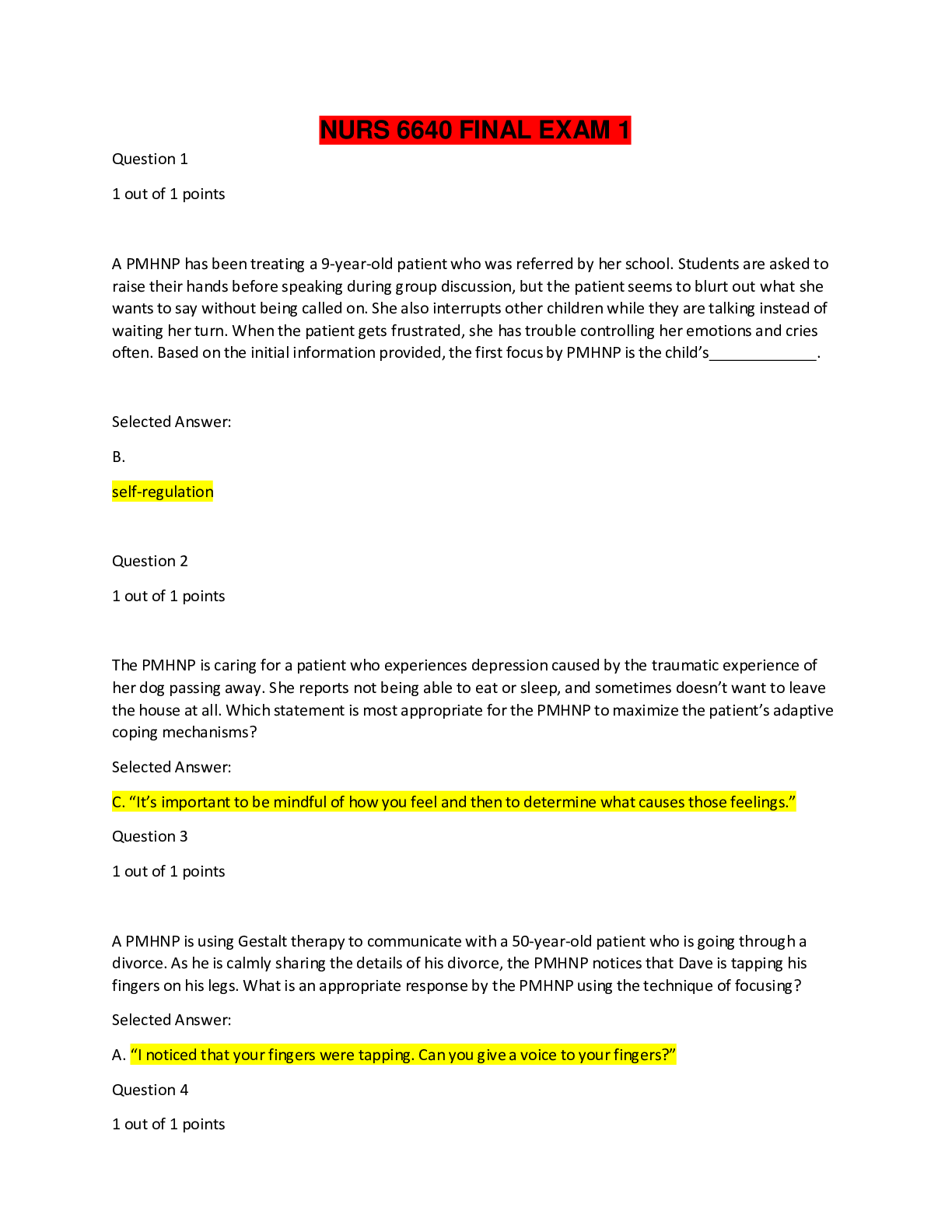*NURSING > EXAM > EDF 6225 Module 9 Motivation Operation Exam 26 Questions with Verified Answers,100% CORRECT (All)
EDF 6225 Module 9 Motivation Operation Exam 26 Questions with Verified Answers,100% CORRECT
Document Content and Description Below
EDF 6225 Module 9 Motivation Operation Exam 26 Questions with Verified Answers Antecedent Events - CORRECT ANSWER An environmental condition or stimulus change existing or occuring prior to a behav... ior of interest. Ex: - Eliciting stimulus (UCS, CS) elicits a reflexive response, - Discriminative stimulus (occasions a response/signals availability of RNF) - Establishing/Abolishing operations (alters the value of the reinforcer) Motivating Operation (MO) - CORRECT ANSWER Environmental Variables (lighting, time of day, and weather conditions) that: -Alter the effectiveness of some stimulus objects or events as reinforcers. -Alter the current frequency of all behavior that has been reinforced by that stimulus, object or event. VALUE ALTERING BEHAVIOR ALTERING value-altering effect - CORRECT ANSWER ESTABLISHING/ABOLISHING - An alteration (increase or decrease) in the reinforcing effectiveness of a stimulus, object, or event as a result of a motivating operation. - Influences the potency of a reinforcer to increase future frequency of bx • EO: an increase in the reinforcing effectiveness of some stimulus, object, or event • AO: a decrease in reinforcing effectiveness of some stimulus, object, or event behavior-altering effect - CORRECT ANSWER EVOCATIVE/ABATIVE - An increase (evocative effect) or decrease (abative effect) in the current frequency of a behavior that has been reinforced by some stimulus, object or event in the past. - Interpreted as a change in frequency due to the organism's bx contacting reinforcement • Can refer to response frequency, magnitude, latency, etc. EO: Increase in the current frequency of behavior that has been reinforced by some stimulus, object, or event AO: Decrease in the current frequency of behavior that has been reinforced by some stimulus, object, or event Antecedent Variables - CORRECT ANSWER Alter the current frequency of all behavior relevant to that MO or SD. Operant variables - CORRECT ANSWER Control response frequency due to their relation to reinforcing or punishing consequences Sd - CORRECT ANSWER Related to the differential availability of a currently effective form of reinforcement for a particular type of behavior Signal reinforcement is available Learning history! - Change people's chance of getting something. Ex: - The fridge in you kitchen -Phone ringing MO - CORRECT ANSWER Related to the differential reinforcing effectiveness of a particular type of environmental event -How effective a reinforcer may be at that time -How much people want something -Why a person wants, or doesn't want something in a particular moment Ex: -"Out of Order" light on a vending machine -The gas on your car is empty - Empty stomach MO vs Sd Similarity - CORRECT ANSWER - Both have antecedent that alter current frequency of participants behavior - Both are operant variables - Both control response frequency Establish/Abolish - CORRECT ANSWER Establish or Abolish something as an effective REINFORCEMENT Evoked/Abative - CORRECT ANSWER Evoke or Abate BEHAVIOR maintained by access to reinforcement Unconditioned MOs (UMO's) - CORRECT ANSWER Events, operations, and stimulus conditions with unconditioned value-altering effects that are unlearned. Increase reinforcement effectiveness: Deprivation of food, water, sleep, activities oxygen and sex Ex: • Food reinforcement as a result of food deprivation • Pain reduction reinforcement as a result of pain onset or increase Unconditioned MO Examples: - CORRECT ANSWER Hunger, thirst, hypoxemia (lack of oxygen), physical inactivity, insomnia, extreme temperature, painful stimulation, etc. Deprivation of food, water, oxygen, activity, & sleep = reinforcer-establishing & evocative effects Ingestion of food and water, oxygen intake, engaging in activity, & sleeping (satiation) = reinforcer-abolishing & abative effects Conditioned MOs (CMO's) - CORRECT ANSWER • Motivating variables that alter the reinforcing effectiveness of other stimuli, objects, or events as a result of the organism's learning history. Alter the momentary frequency of all behavior that has been reinforced by those other events (like UMO's) Conditioned MOs (CMO's) Examples: - CORRECT ANSWER - Having an appointment -Needing your cars' key (Sd)-Using the keys -Leaving to the appointment Three types of CMO's - CORRECT ANSWER • Surrogate (CMO-S) • Reflexive (CMO-R) • Transitive (CMO-T) Surrogate CMO (CMO-S) - CORRECT ANSWER A 'substitute' or 'stand-in'. Previously neutral stimulus that acquired its MO effects by being paired with a UMO. Has the same value-altering and behavior altering effects as the MO it was paired with. Ex: -Deprivation of water, establishes water as a reinforcement. -Time on the clock influences the reinforcing value of food Reflexive CMO (CMO-R) - CORRECT ANSWER Alters the value of its own removal as a type of reinforcement; or continued presence as a type of punishment Acquires MO effectiveness by preceding some form of worsening or improvement Ex: A "warning stimulus" in an avoidance procedure which (1) results in its own removal effective as reinforcement, and (2) evokes any behavior that has accomplished that effect. - In the presence of your boss, you "can't seem to do anything right" and are constantly punished. Because of this, you want to spend less time with this person. (and therefore avoid possible punishment) Transitive CMO (CMO-T) - CORRECT ANSWER Makes something else effective as reinforcement because of its relation or association to the unconditioned reinforcer. Environmental variable that establishes or abolishes the reinforcing effectiveness of another stimulus and evokes or abates the behavior that has been reinforced by the other stimulus. Ex: Presence of a lock on a fridge establishes the reinforcing value of a key when access to food is valuable as a source of reinforcement UMO for punishment - CORRECT ANSWER An environmental variable that does not depend on a learning history that alters the punishing effectiveness of a stimulus, object or event and alters the frequency of the behavior that has been so punished. Value altering for punishment: Ex: Mo for removal of food results in food deprivation. Difference between Sd and CMO-T - CORRECT ANSWER SD: if reinforcer is more available in the presence than in the absence of the stimulus CMO-T: if reinforcer is more valuable in the presence of the stimulus CMO-T: Contriving motivation - CORRECT ANSWER Interrupted Chain Procedure. the inaccessibility of the item needed to complete a chained task creates conditions under which the needed item increases in value. • To use: the practitioner typically selects a chained task already in a child's repertoire, and inserts a mand instructional trial. Ex: If you want the child to ask for a spoon, remove the spoon before he started eating. The last time you ate was four hours ago. Your stomach is rumbling. You pass a deli and stop in. 1. CMO-S 2. CMO-R 3. CMO-T 4. UMO - CORRECT ANSWER CMO-S In the presence of your boss, you "can't seem to do anything right" and are constantly punished. Because of this, you want to spend less time with this person. Soon the environment(s) associated with this person seem to take on these aversive qualities and you avoid going anywhere near where this person might be. Even hearing their voice down the hallway may signal you to take an early lunch and avoid running into them (and therefore avoid punishment) CMO-R UMO CMO-T CMO-S - CORRECT ANSWER CMO-R A college student is at a party and he wants a beverage. He asks a friend for a red solo cup so that he can get his beverage. 1. CMO-S 2. CMO-T 3. UMO 4. CMO-R - CORRECT ANSWER 2. CMO-T MOs effect: - CORRECT ANSWER • The results of preference assessments and functional analyses • Engagement with activities • Within-session responding • The rate of acquisition of target behaviors • The occurrence of challenging behaviors [Show More]
Last updated: 5 months ago
Preview 1 out of 6 pages
Instant download
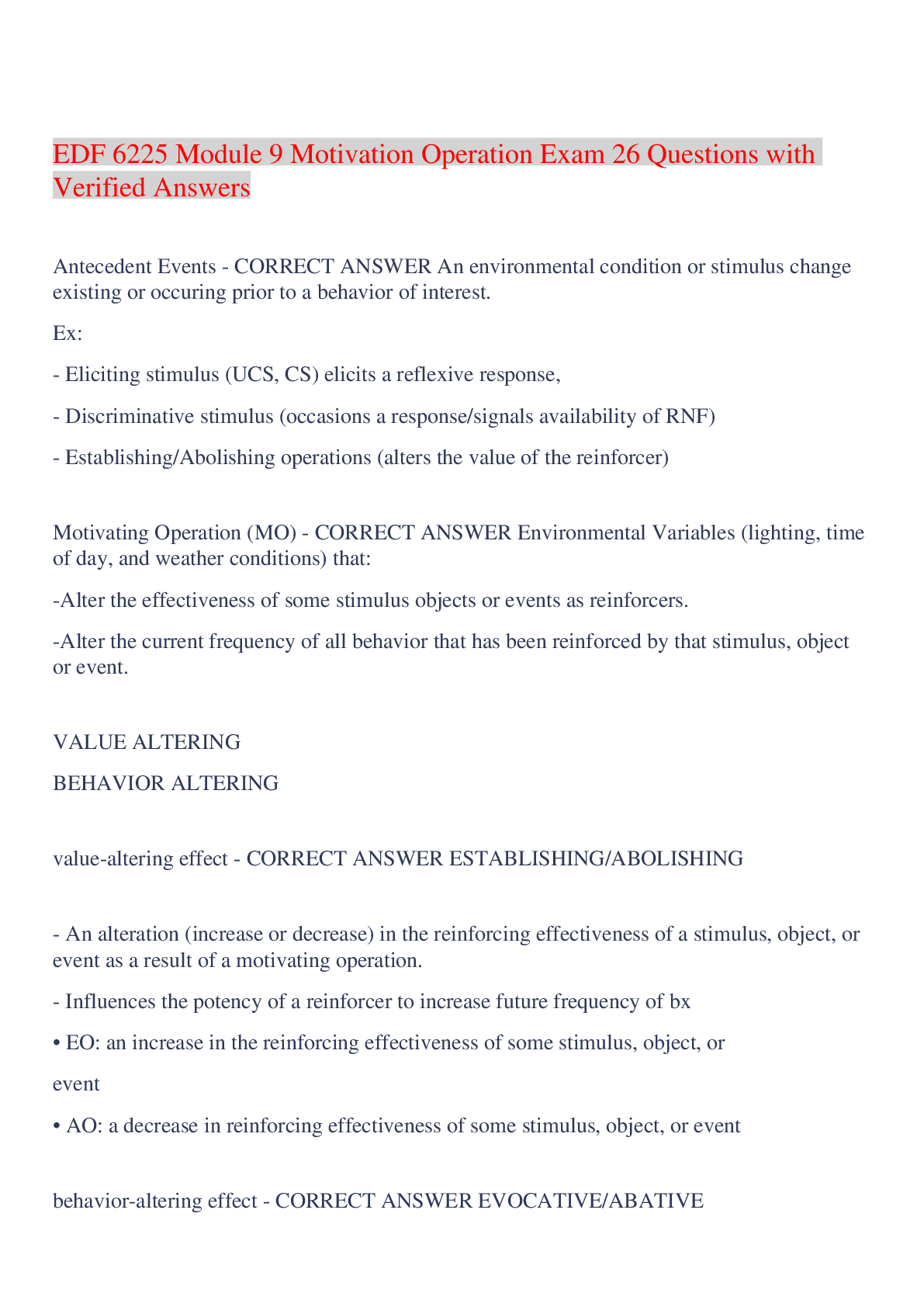
Buy this document to get the full access instantly
Instant Download Access after purchase
Add to cartInstant download
Reviews( 0 )
Document information
Connected school, study & course
About the document
Uploaded On
Dec 25, 2023
Number of pages
6
Written in
Additional information
This document has been written for:
Uploaded
Dec 25, 2023
Downloads
0
Views
53













